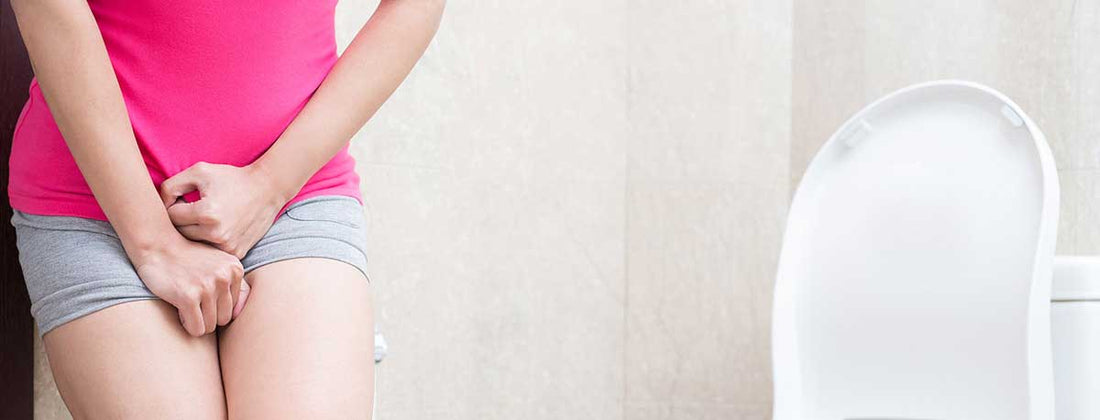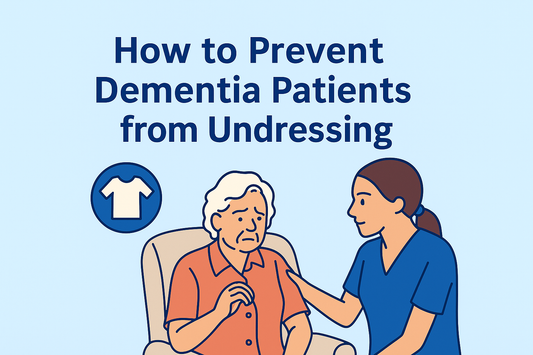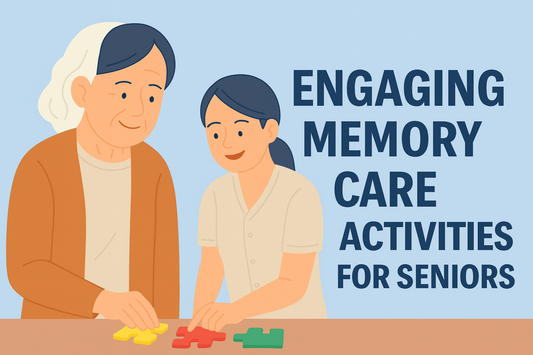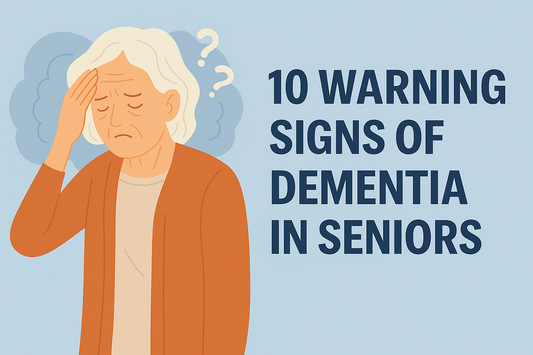
What Causes Incontinence in Women?
WHAT IS INCONTINENCE?
Incontinence is a term used to describe any accidental or involuntary loss of urine from the bladder or bowel motion, feces, or wind from the bowel. The condition ranges in severity from minor involuntary leaks to complete loss of bladder or bowel control. Fortunately, incontinence is something that can be easily treated, managed, and in many cases, cured.
QUICK LINKS - TOPICS COVERED:
- WHAT IS INCONTINENCE?
- TOP CAUSES OF INCONTINENCE FOR WOMEN
- WHY INCONTINENCE IS MORE FREQUENT IN WOMEN?
- INCONTINENCE & DEMENTIA
- TREATING & MANAGING INCONTINENCE
There are two distinct categories of incontinence, urinary incontinence and bowel incontinence.
Urinary Incontinence
This condition occurs due to problems with the muscles and nerves that help the bladder hold or release urine. Leaks may occur when a person coughs or sneezes or when they have a sudden urge to go but can’t get to a bathroom in time. There are five basic types of incontinence:
-
Stress Incontinence
Occurs when you sneeze, cough, laugh, lift heavy objects, exercise, or do other activities that put pressure on your bladder.
-
Urge Incontinence
This type of incontinence is also known as an overactive bladder (OAB). It is when you leak urine after feeling a sudden, strong urge to go. Signs of OAB include going to the bathroom eight or more times a day and more than once during the night. The urge to urinate may also be felt when you hear or touch running water. Sometimes, you may even get the urge to urinate even if your bladder is empty.
-
Mixed Incontinence
This is a situation when you have more than one type of incontinence. Often stress and urge incontinence can appear together. This type of incontinence tends to be more common in women.
-
Overflow Incontinence
Occurs when you are not able to empty your bladder completely, so you may leak urine once your bladder is full. This type of incontinence is more common in men.
-
Functional Incontinence
Some medical conditions can keep a person from getting to the bathroom in time or cause the person to lose control of their bladder. Examples of illnesses that can cause this type of incontinence includes, arthritis, dementia, multiple sclerosis.
Bowel Incontinence
People with this condition usually have trouble controlling their bowels. It means they may pass feces or stools at the wrong time or in the wrong place. They may also pass wind when they don’t mean to or experience staining of their underwear. About one in 20 people experience poor bowel control and becomes more common as people get older. Often, bowel incontinence appears together with urinary incontinence.
TOP CAUSES OF INCONTINENCE FOR WOMEN
Some common causes of urinary incontinence include:
-
Urinary Tract Infection
A UTI (urinary tract infection) can sometimes irritate your bladder, leaving you with the strong urge to urinate and sometimes can lead to incontinence.
-
Pregnancy & Childbirth
The strain of carrying a baby for and giving birth naturally can weaken muscles, ligaments, and nerves in the pelvis, thereby leading to incontinence.
-
Menopause
During menopause, stress incontinence and OAB are more common when estrogen levels drop. The estrogen hormones keep the bladder, pelvic muscle, and urethra healthy.
-
Smoking
There is a positive correlation between smoking and incontinence. Studies have shown that smokers are at a higher risk of incontinence than nonsmokers, although experts aren’t exactly sure why.
-
Obesity
Excess weight can put pressure on your bladder, causing urine to leak.
-
Medical Conditions
Some medical conditions where nerve or muscle damage is prevalent, such as diabetes, multiple sclerosis, and Parkinson’s disease can lead to incontinence. Other illnesses such as dementia also can trigger incontinence in the late stages.
-
Medications
Certain medications, such as diuretics, sedatives, sleeping pills, and some drugs to treat depression can cause incontinence or even make it worse. Incontinence is usually a side effect of taking these drugs.
-
Hysterectomy
The muscles and ligaments that support the bladder may get damaged when you have surgery to remove your uterus.
WHY INCONTINENCE IS MORE FREQUENT IN WOMEN?
Researchers estimate that around 1 in 4 women over the age of 40 experience some type of urinary incontinence. Experts have noted that women tend to experience a mix of stress and urge incontinence more often than men. This can be due to some of the causes mentioned above. Among those causes, it should be noted that several of those causes apply exclusive to women.
For example, pregnancy, childbirth, and menopause are conditions that a woman almost always experiences. This is one of the reasons why they are at higher risk for incontinence and do in fact have incontinence more often than men.
Another condition, UTIs, are more common in women as well, which leads to higher risk of incontinence as well. Women are at higher risk of UTIsdue to the close proximity of the vagina, urethra, and anus, where bacteria can easily enter a woman’s bladder. Hysterectomies are also something that is exclusive to women, which can lead to incontinence.
Lastly, functional incontinence due to medical conditions that are more prevalent in women is another reason why incontinence is more frequent in women. One such condition is dementia.
INCONTINENCE & DEMENTIA
Many people, both men and women, will experience incontinence during the later stages of dementia. Factors such as the inability to recognize the need to use the restroom, forgetting where the bathroom is located, mediations, stress, certain physical or other medical conditions, constipation, or clothing that is difficult to remove can lead to incontinence in people with dementia.
In late stage dementia, the person often has completely lost their ability to communicate, comprehend, and take care of their self. Therefore, they will be highly dependent on a caregiver to manage most of their daily needs and conditions, including incontinence.
TREATING & MANAGING INCONTINENCE
In general, managing incontinence is easy as most causes of incontinence is treatable. And for those conditions that are not treatable, they can be managed better. For example, the risk of incontinence due to pregnancy and childbirth can be reduced by doing kegel exercises. It can also work for other types of stress or urge incontinence.
Bladder training is another way of managing incontinence. By using the restroom at set times instead of waiting for the urge, you can slowly regain control over your bladder and increase the time between bathroom trips. In the rare instance where incontinence is severe, there are surgical options that doctors can recommend, where a small ribbon of mesh is used to support the bladder. This is known as a sling procedure.
Incontinence & Dementia
With regards to incontinence and dementia, the ways to manage it can be slightly different. If the person with dementia has only started to experience incontinence, they may only need some assistance from a caregiver to get to a bathroom. For example, make a clear path to the bathroom or keep the door open to let the toilet be visible. Be sure to accident-proof the bathroom as well. You can also consider using a portable commode or urinal for the person’s bedroom for night use.
By the time a person with dementia develops incontinence, their ability to communicate will likely be poor. Therefore, it is important to watch for non-verbal cues such as restlessness or unusual sounds or faces. Some people do well when they are reminded to use the bathroom at regular intervals. They should also be given plenty of time to empty their bladder and/or bowels. Caregivers should be aware to not shame or scold the person in case of accidents. They should remain calm and supportive.
As the severity of incontinence increases, you may also have to opt for using incontinence products. For example, using waterproof mattress covers and incontinence pads on the person’s bed. And if the dementia has rendered the person immobile, adult diapers can be used to manage their incontinence.



